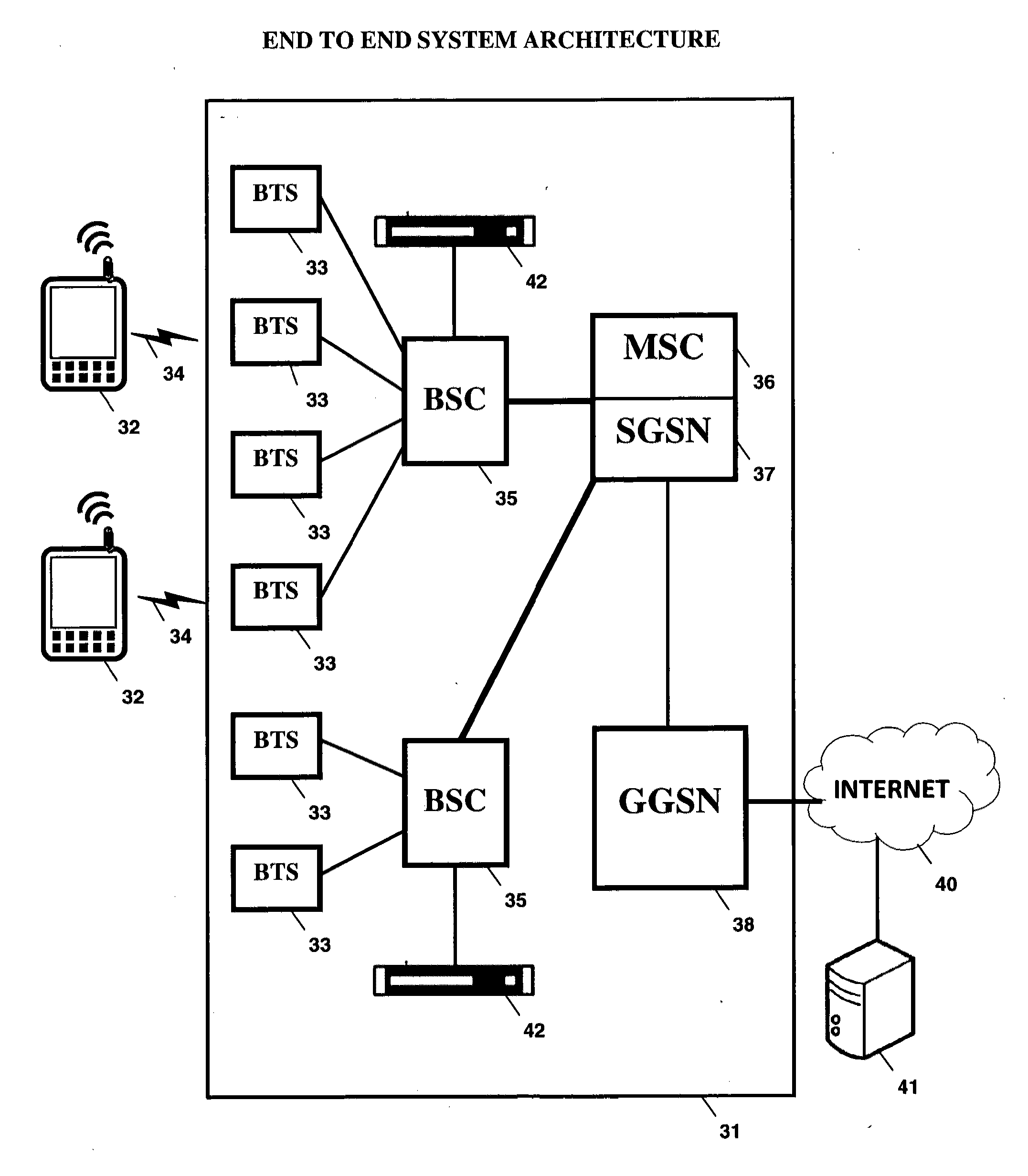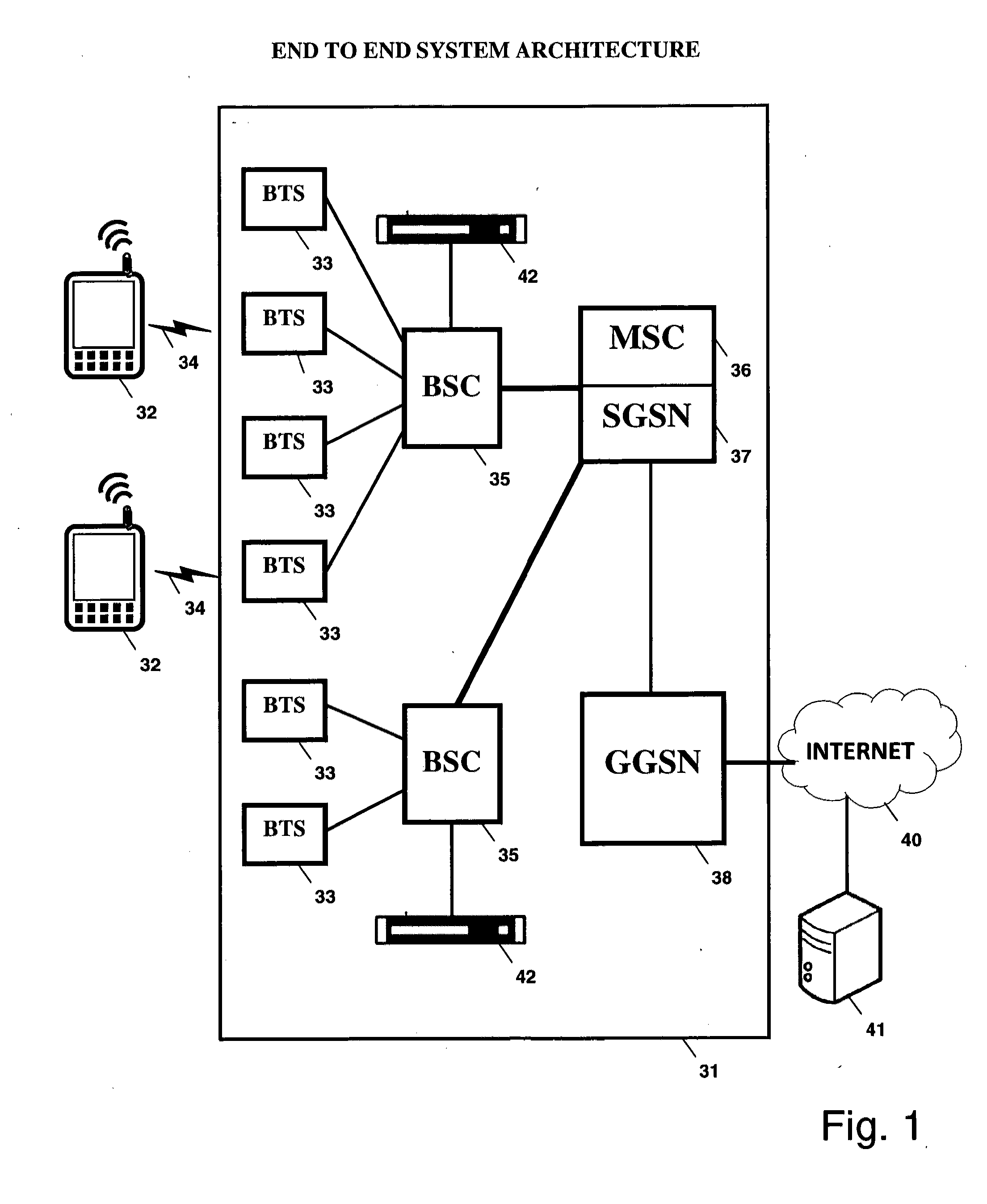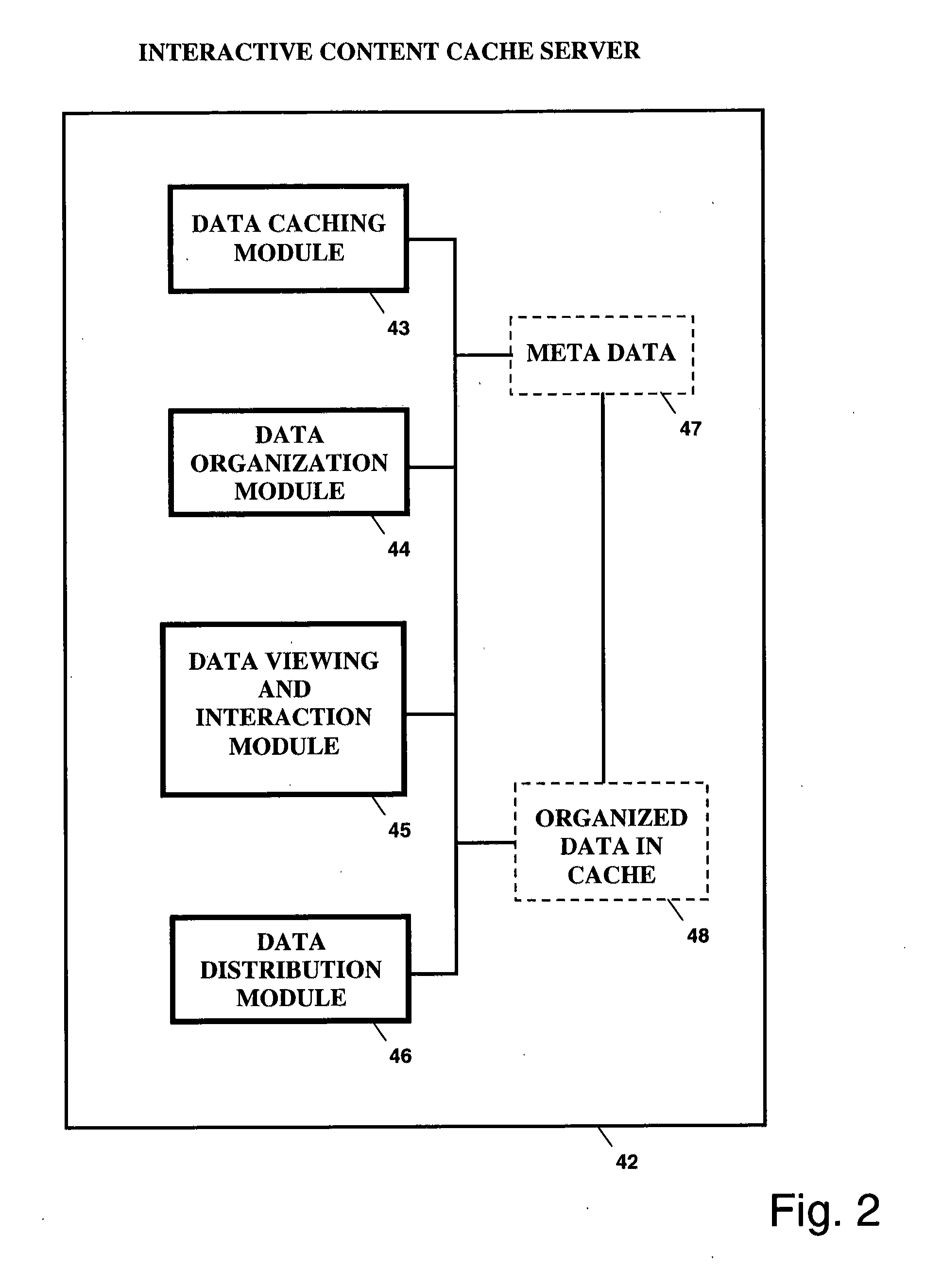Cellular data bandwidth optimization using social networking concepts
a technology of social networking and data bandwidth, applied in the field of social networking concept-based bandwidth optimization system, can solve the problems of low number of cache hits, limited methods, and inability to reuse data from one data stream in another data stream from another user, so as to save precious air interface bandwidth and save bandwidth. , the effect of saving bandwidth
- Summary
- Abstract
- Description
- Claims
- Application Information
AI Technical Summary
Benefits of technology
Problems solved by technology
Method used
Image
Examples
Embodiment Construction
[0153]In the following description, first an end to end system for bandwidth optimization is described followed by details of the interactive content cache server. Usage of this system is illustrated with specific examples. The method that provides bandwidth optimization by enabling view of meta data at interactive content cache server is also described.
[0154]FIG. 1 shows end to end wireless data communication network 31 consisting of different mobile devices 32 having the ability to view cached data. Wireless data communication network 31 includes mobile devices 32 that are connected to base transceiver stations (BTS) 33 via air interface 34. The Mobile device 32 can be one of cellular phone, smart phone, laptop computer, network appliance, navigation device, personal digital assistant, wireless modem, tablet device and other similar devices.
[0155]Base transceiver station 33 consists of one or more radio antenna elements and handles radio link protocols with mobile devices 32. Base...
PUM
 Login to View More
Login to View More Abstract
Description
Claims
Application Information
 Login to View More
Login to View More - R&D
- Intellectual Property
- Life Sciences
- Materials
- Tech Scout
- Unparalleled Data Quality
- Higher Quality Content
- 60% Fewer Hallucinations
Browse by: Latest US Patents, China's latest patents, Technical Efficacy Thesaurus, Application Domain, Technology Topic, Popular Technical Reports.
© 2025 PatSnap. All rights reserved.Legal|Privacy policy|Modern Slavery Act Transparency Statement|Sitemap|About US| Contact US: help@patsnap.com



